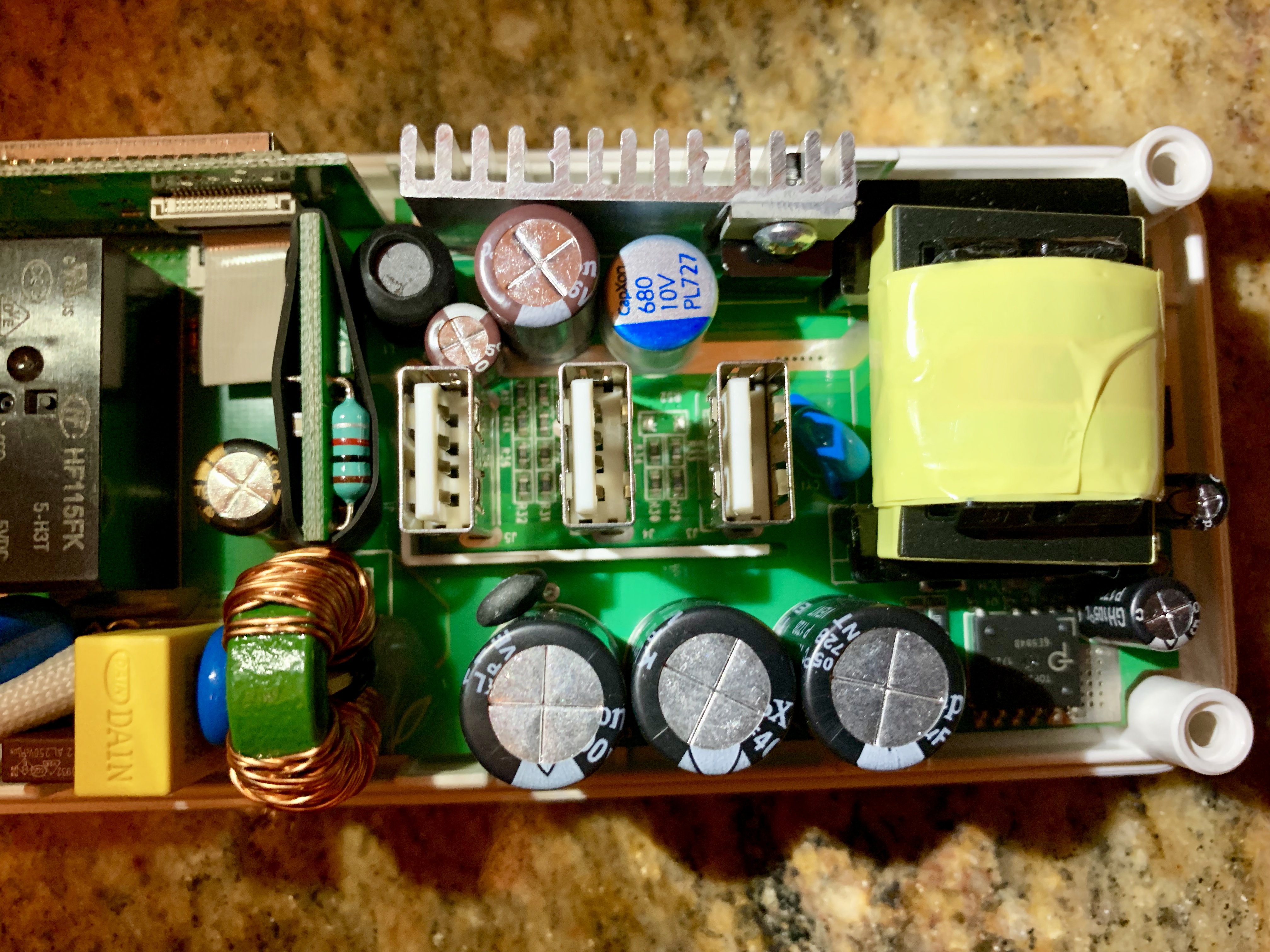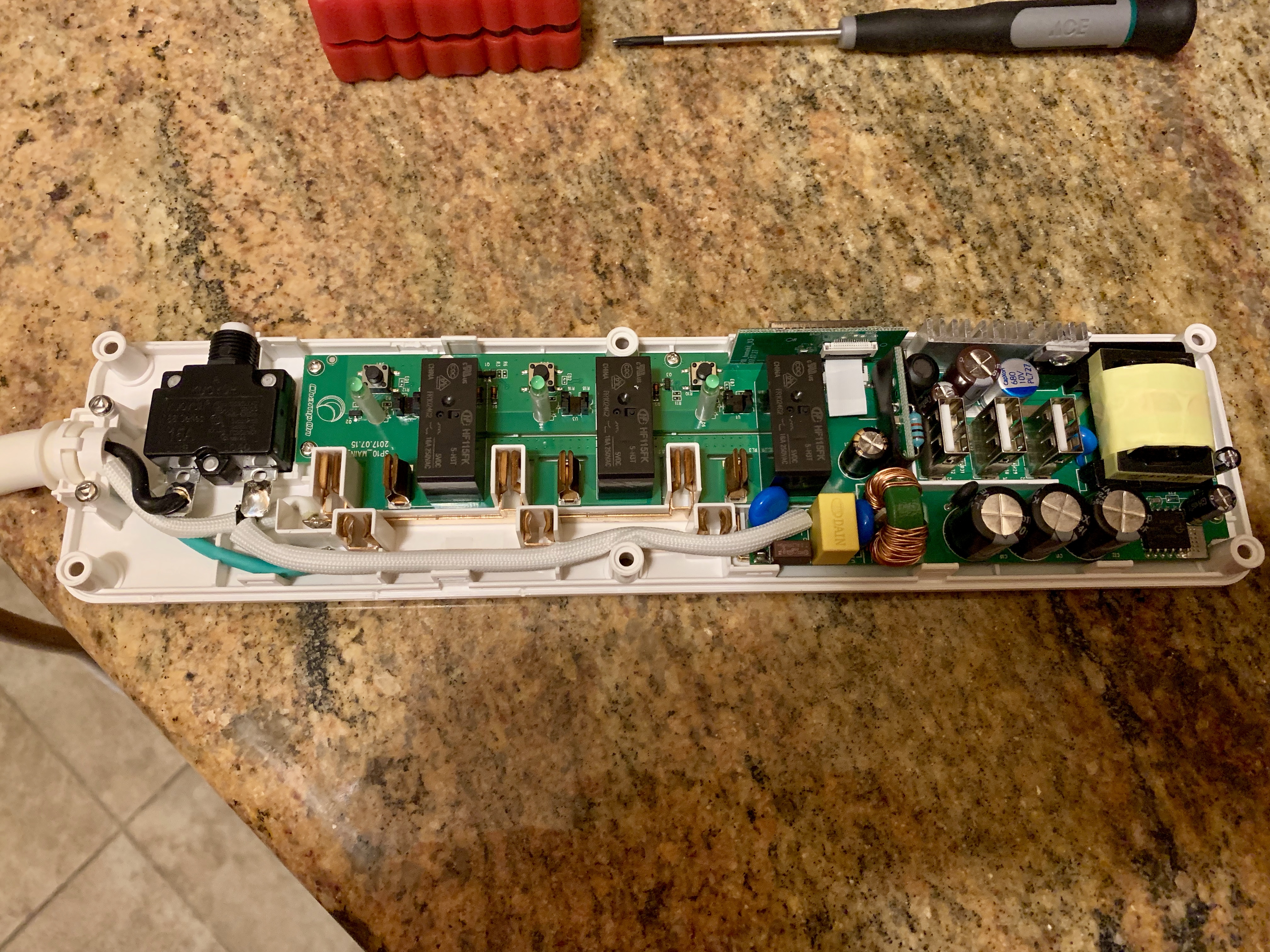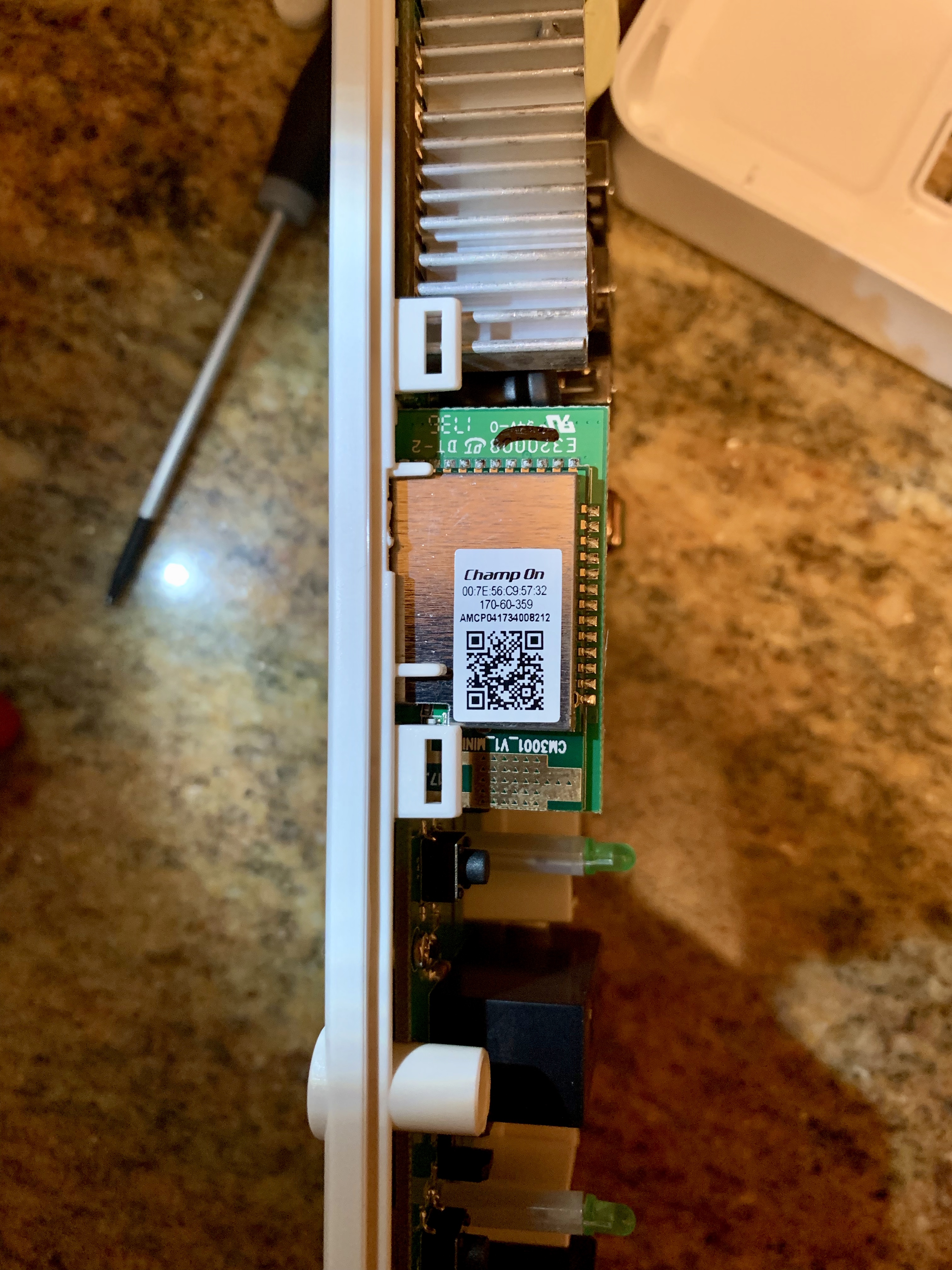Investigating HomeKit Power Strips

I started looking at various HomeKit-compatible power strips. There appear to be two on the market:
- KooGeek SmartOutlet, https://www.koogeek.com/product-o1us.html
- VOCOlinc Smart Power Strip, https://www.vocolinc.com/products/pm2-pm2e-smart-power-strip?variant=14795365744751
And one more announced, Eve Power Strip, https://www.macrumors.com/2018/08/30/eve-announces-new-light-strip-power-strip/
A few things caught my attention:
- The power outlets are all arranged the same way.
- The Koogeek and Eve have the exact same layout of USB ports.
- They all require 2.4GHz WIFI to work (802.11b/g/n specifically)
- They all want you to install their app instead of just use Apple Home.
- The reset button is in the same place on each power strip.
- They all have the exact same power specifications. (Rated current: 15A
Rated power: 1800W)
I bought the Koogeek, because it was the only one I could actually buy. The Eve is still just an announcement. The VOCOlinc is out of stock. However, none of these are cheap, ranging from $44 to $79.
The commonalities between all three lead me to believe they are all using the same innards with just different cases and marketing around it. I couldn't find any specs on the insides and Apple's list of HomeKit certified companies wasn't too enlightening. So I opened mine. Under the six rubber feet are triangle head security screws. A T7, Torx, screwdriver handles these triangle screws with ease.

As you can see, pretty straightforward. What interested me the most was the HomeKit module. You can see it here, connected by a small ribbon cable.

The actual PCB of the whole strip seems to be made by DT, https://dtpcb.manufacturer.globalsources.com/si/6008832077799/Homepage.htm. Of course, I looked up "Champ On" and the numbers there and found nothing on Google. The QR code is literally the MAC address, the HomeKit ID, and the part number there. Digging into the MAC address, 00:7E:56 should be the manufacturer's assigned range. And sure enough, it is, to CHINA DRAGON TECHNOLOGY LIMITED, https://hwaddress.com/company/china-dragon-technology-limited. Since WIFI is really just a radio transmitter/receiver, it has to have an FCC license for the American market. Looking up that license, https://fccid.io/ROW gives an email address and official information. I then took the domain of the email, and found their site, http://www.cdtech.cn. Translating their site to English, I find they don't show any WIFI products, just TV Tuners, GPS receivers, and Bluetooth. Digging around their site shows the latest software they offer is from 2014 for developing or configuring their boards.
The mini-board is shielded and the shield is soldered to the PCB. I didn't see an easy way to take it off without destroying the assembly, so I just left it alone. The mini-board appears to have the JTAG pins removed, but the labeled contacts still there. The ribbon cable actually fell out of the mainboard connector. The mini-board was just placed in there, not mounted. I had to re-attach the ribbon cable and carefully re-assemble it to make sure it stayed connected.
The other chips on the main board seem to be related to power management.
My guess is if I bought the other power strips available on the market, they all have the same innards produced by the same companies (DT, China Dragon Technology LTD, etc). The price difference is possibly justified by the design of the case, the marketing around it, and whatever software features they offer over the basic HomeKit functionality.
I'd love these devices to be compatible with 5GHz. My home wifi is 802.11ac only, also IPv6 only. I realize the device doesn't need any of the performance offered by 802.11ac, but as home wifi improves, keeping around a slower 2.4GHz band for IoT devices seems suboptimal.
Here are all the pictures for future research and enjoyment. Future research involves poking at the HomeKit module by China Dragon Tech and seeing how secure it is and/or if the JTAG contacts do work and what I can pull for firmware.
[gallery ids="27377,27376,27375,27374,27373,27372,27371,27370,27369,27368,27367,27366,27365" orderBy="rand" orderby="rand" type="rectangular" link="file"]